Petruichthys sp. 'rosy'
Rosy Loach
Classification
Order: Cypriniformes Family: Nemacheilidae
Distribution
This fish is collected alongside Danio margaritatus which was initially thought restricted to a single locality around 1,040 m AMSL near the town of Hopong in Shan State, eastern Myanmar, but is now known to occur in waters associated with the Salween (aka Thanlwin) River throughout southern Shan and even across the border in northern Thailand.
It’s unclear if ‘Y.‘ sp. ‘rosy’ shares the same pattern of distribution but it’s certainly feasible.
Habitat
The type locality of Danio margaritatus is an area of permanently-flooded grassland formed by the damming of a spring for agricultural purposes.
The water is only around 30cm deep, transparent and supports dense growths of aquatic plants, mostly from the family Hydrocharitaceae which includes such genera as Elodea, Egeria and Blyxa.
Other sympatric species included Devario sondhii, Microrasbora cf. rubescens, and Channa harcourtbutleri.
From images most of the the other habitats look broadly similar, i.e., shallow areas of wetland surrounded by open grassland, though at least one population was supposedly discovered in ‘deep forest’.
Maximum Standard Length
25 – 30 mm.
Aquarium SizeTop ↑
Base dimensions of 60 ∗ 30 cm or equivalent are required despite its diminutive size since this species is very active and should be maintained in numbers.
Maintenance
Best kept in a densely-planted tank and an excellent choice for the carefully-aquascaped set-up.
The addition of some floating plants and driftwood roots or branches, and leaf litter also seems to be appreciated and adds a more natural feel.
If you wish to raise fry alongside the adults the addition of fine-leaved aquatic moss such as a Taxiphylum sp. is advisable (see ‘Reproduction’).
The water should be well-oxygenated but not turbulent though a degree of flow is acceptable.
Do not add this fish to a biologically immature aquarium as it can be susceptible to swings in water chemistry, and be sure to perform regular partial water changes to maintain quality.
Water Conditions
Temperature: 20 – 26 °C
pH: 6.5 – 8.0; a value of 7.3 was recorded at the habitat near Hopong.
Hardness: 90 – 268 ppm
Diet
Likely to be a micropredator feeding chiefly on small insects, worms, crustaceans, and other zooplankton in nature.
In the aquarium it must be offered items of a suitable size and quality, particularly live Daphnia, Moina, Artemia nauplii, micro worm, etc.
Small or crushed floating dried foods are also accepted and should ideally contain some plant or algal material.
It’s often in a semi-emaciated condition post-import and may require several small meals each day in the absence of competitors during the acclimatisation period.
Behaviour and CompatibilityTop ↑
Peaceful and surprisingly bold for its size, though still likely to be intimidated or outcompeted for food by much larger or more boisterous tankmates.
Small cyprinids from genera such as Boraras, Microdevario, Trigonostigma, Tanichthys, and Microrasbora are perhaps the best options, and we suspect many small characids would also be fine.
Many peaceful loaches and catfishes should also prove suitable but as always research your choices thoroughly in order to avoid problems.
Yunnanilus spp. are highly gregarious and should be kept in a group of at least 8-10 specimens, ideally more.
Maintaining it in such numbers will not only make the fish less nervous but result in a more effective, natural-looking display.
Unlike most loaches they also spend a lot of time in the open, often hovering in midwater, forming schools, and exploring all levels of the aquarium.
Sexual Dimorphism
Adult females are noticeably larger and rounder-bellied than males and have a brownish base body colour overlaid with many irregular dark spots and small blotches, plus a darkish lateral stripe which is broken into a series of blotches in some specimens.
In the smaller, slimmer males base body colour is pale orange, this becoming much brighter and more intense in nuptial individuals, particularly in the posterior portion of the body.
When dark spots are present they tend to be restricted to the dorsal surface of the fish, and the lateral body stripe is usually solid, i.e., unbroken.
Reproduction
This species is an egg-scattering spawner that shows no parental care, although it can be difficult to find females as often only the colourful males are exported.
If the fish are in good condition they will spawn often and in a densely-planted, mature aquarium it’s possible that small numbers of fry may start to appear without intervention.
However if you want to increase the yield of fry a slightly more controlled approach is required.
The adult group can still be conditioned together but one or more smaller, perhaps 10-15 litre, containers should also be set up and filled with aged water.
Fill much of the available space with Taxiphyllum or other fine-leaved plant.
Neither lighting nor filtration is necessary although you can install a small air-powered sponge filter if you prefer.
When the adult fish are well-conditioned a single pair or group comprising several of each gender can then be introduced to each container, though it’s worth noting that the more individuals involved the greater the risk of egg predation.
The male initiates spawning by approaching a female and appearing to mouth or ‘taste’ the area around her cloaca.
If the female is not ready the male quickly loses interest but if receptive the female is driven around the aquarium until the pair settle and eggs are released in small batches of 1-3, these falling onto the substrate or among plant leaves where they become adhered after a few minutes.
Several such events may occur before a female is spent.
If numbers are limited two or more males may attempt to spawn with a single female simultaneously, and once eggs are spotted the adults are best removed as they will eat any they find.
Incubation is temperature-dependant to an extent but is around 24 hours at 28°C/82.4°F with the yolk sac fully-absorbed around 24-36 hours post-hatching.
Once the fry are free-swimming initial food should be Paramecium or a proprietary dry food of sufficiently small (5-50 micron) grade, introducing Artemia nauplii, microworm, etc., once they are large enough to accept them.
NotesTop ↑
This species continues to be referred to by the fictitious scientific name ‘Tuberoschistura arakensis‘ or as an undescribed Yunnanilus sp. and is also sometimes traded as Y. sp. ‘orange’ or ‘Burmese pink loach’ but appears to be a member of the genus Petruichthys as per Kottelat (2012).
Yunnanilus is a diverse assemblage of which the majority of members are endemic to the Yunnan plateau, Yunnan province, southern China.
A number of them are known only from a single locality or have very restricted ranges, and in some cases have come to colonise habitats or ecological niches not normally associated with nemacheilid loaches.
Several groups of closely-related species existing within Yunnanilus have been noted and Kottelat (2012) moved those that had been formerly included in the Y. nigromaculatus species group into the genus Eonemacheilus Berg, 1938, while those from Myanmar were included in Petruichthys Menon, 1987.
Unfortunately we’ve yet to obtain the original descriptions of either of these revalidated genera, and no diagnoses were provided by Kottelat (2012), so we’re unable to provide distinguishing characters at this time.
The family Nemacheilidae is widely-distributed across most of Eurasia with the Indian subcontinent, Southeast Asia and China representing particular centres of species diversity.
References
- Bănărescu, P. M. and T. T. Nalbant, 1995 - Travaux du Muséum d'Histoire Naturelle : 429-495
A generical classification of Nemacheilinae with description of two new genera (Teleostei: Cypriniformes: Cobitidae). - Freyhof, J. and D. V. Serov, 2001 - Ichthyological Exploration of Freshwaters 12(2): 133-191
Nemacheiline loaches from Central Vietnam with descriptions of a new genus and 14 new species (Cypriniformes: Balitoridae). - Kottelat, M., 2012 - Raffles Bulletin of Zoology Supplement 26: 1-199
Conspectus cobitidum: an inventory of the loaches of the world (Teleostei: Cypriniformes: Cobitoidei). - Kottelat, M. and X.-L. Chu, 1988 - Environmental Biology of Fishes 23(1-2): 65-93
Revision of Yunnanilus with descriptions of a miniature species flock and six new species from China (Cypriniformes: Homalopteridae).

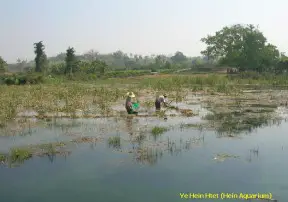

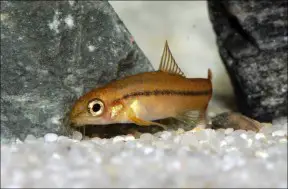
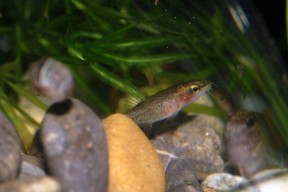
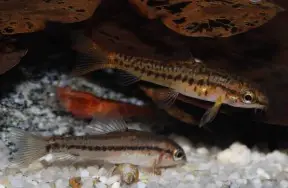
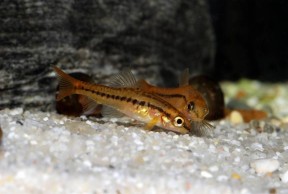
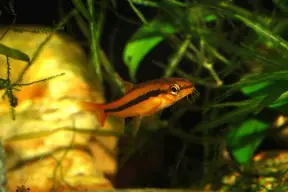
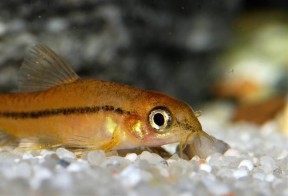
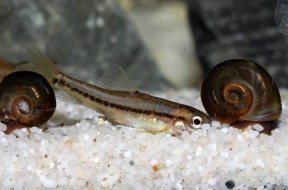

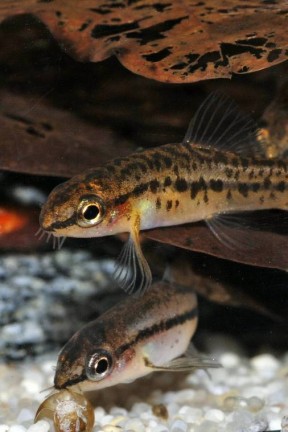
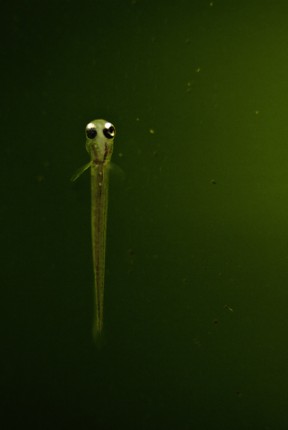
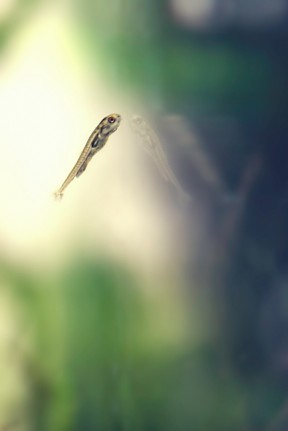
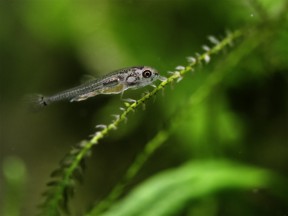
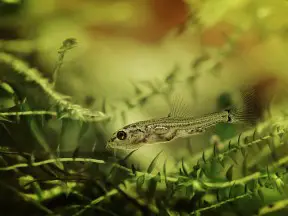
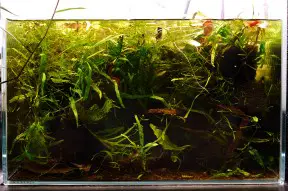

March 16th, 2015 at 9:54 am
Hi, I have 5 of these in one tank (bought from local fish shop) and they definitely grow larger than than 30 mm. Actually at present they are approx. 50 mm.
March 20th, 2015 at 6:24 am
Please post a photo on the forum, perhaps you discovered a new species!
November 10th, 2015 at 10:03 pm
Hi! Does anyone know the life span of these fish?